
In today’s Claire Chats, I talk about the age of brides in the medieval and Tudor periods and discuss the accusations of paedophilia that are often flung at Henry VIII, Charles Brandon and Edmund Tudor on social media.
[Read More...]
In today’s Claire Chats, I talk about the age of brides in the medieval and Tudor periods and discuss the accusations of paedophilia that are often flung at Henry VIII, Charles Brandon and Edmund Tudor on social media.
[Read More...]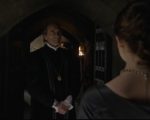
Sir William Kingston, Constable of the Tower of London, Knight of the Garter and comptroller of the King’s household, was born around 1476. His origins are unknown but historian Stanford Lehmberg believes that he was from a Gloucestershire family who were related to the barons Berkeley of Berkeley Castle, Gloucestershire, and also to Edward Stafford, 3rd Duke of Buckingham. Kingston had a brother named George.
In 1497, Kingston was appointed as a yeoman of the chamber to Henry VII and served in this position until 1509. In 1506, he became a Justice of the Peace for Gloucestershire. At Henry VII’s funeral in 1509, he served as a gentleman usher. In 1511 and 1512, he served in the army of Henry VIII and in September 1513 he fought at the Battle of Flodden against the Scots. He was knighted in October 1513.
In 1514, Kingston was made a king’s sewer and a sheriff of Gloucestershire, and in 1519, Cardinal Wolsey chose him to be a knight of the body in the privy chamber following Wolsey’s purge of the privy chamber in the Eltham Ordinances. He continued to serve the king as keeper of the king’s jewels and plate and then as a carver in 1521.
[Read More...]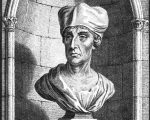
John Leland, the well-known Tudor poet and antiquary was born in London on 13th September, probably in 1503 although the actual year of his birth is unknown.
Leland is known for his Latin poems and his antiquarian writings which included Assertio inclytissimi Arturii regis Britanniae, which he presented to Henry VIII; his New Year’s gift to Henry VIII, Antiquitates Britanniae; De uiris illustribus, a biographical encyclopedia of British writers; his travel notes, and his defence of the legends of King Arthur.
He died on 18th April 1552 in the parish of St Michael le Querne, Cheapside, London, and was buried there. It was recorded in 1547 that Leland “fell besides his wits” and in 1551, his brother was granted custody of him and his possessions.
His works can still be read today so I will share links for you to read them online. Be aware that some will be in the original Latin!
[Read More...]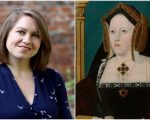

On this day in history, Thursday 12th September 1555, in the reign of the Catholic Queen Mary I, the trial of Thomas Cranmer, Archbishop of Canterbury, opened in the University Church of St Mary the Virgin at Oxford. Cranmer stood accused of heresy, being charged with two main offences, or doctrinal errors: repudiating papal authority and denying transubstantiation.
Martyrologist John Foxe gives an account of Thomas Cranmer’s trial in his “Book of Martyrs”:
[Read More...]
On this day in history, 11th September 1561, eighteen-year-old Mary, Queen of Scots, began her first royal progress. It was to last until 29th September and was the first of nine royal progresses that Mary undertook before she fled to England in 1568.
On this progress, Mary visited Holyrood Palace, Edinburgh Castle, Linlithgow Palace, Stirling Castle, Kincardine Castle, Leslie Castle, Perth, Dundee, St Andrews, Cupar and Falkland Palace.
[Read More...]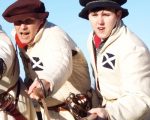
Step back in time to the dramatic year of 1547, when the mighty armies of Scotland and England gave battle to determine who should marry the infant Queen of Scots. With fascinating living history encampments, hands-on activities for all the family, and spectacular battle recreations, this wonderful historical event is not to be missed. See the drama and excitement of Battle of Pinkie Cleugh come to life before your eyes, and discover more about this fascinating period of our history.
[Read More...]
On this day in history…
11 September:
1540 – Death of Thomas Kytson (Kitson) the Elder, merchant, Sheriff of London and builder of Hengrave Hall in Suffolk. He died at Hengrave and was buried in the church there.
1561 – Mary, Queen of Scots began her first royal progress, visiting Holyrood Palace, Edinburgh Castle, Linlithgow Palace, Stirling Castle, Kincardine Castle, Leslie Castle, Perth, Dundee, St Andrews, Cupar, Falkland Palace and Edinburgh, between the 11th and 29th September.
1572 – Pope Gregory XIII ordered a joint commemoration for the defeat of the Ottoman troops by the Holy League at the Battle of Lepanto on 7th October 1571, and for the St Bartholomew’s Day Massacre of the Huguenots in France, in August 1572.
1581 – Death of Barnaby Fitzpatrick, 2nd Baron of Upper Ossory, at Dublin, in the home of a surgeon, William Kelly. In his youth, Fitzpatrick had been friends with Prince Edward (future Edward VI) and had been educated with him. He went on to serve his friend, when he became king, as a Gentleman of the Privy Chamber.
1605 – Death of Sir Thomas Tresham the Younger, Catholic recusant politician, at his home, Rushton Hall, in Northamptonshire. He was buried at St Peter’s Church, Rushton.
1613 – Death of Sir John Brograve, lawyer. He was buried at St Mary’s Church, Braughing, Hertfordshire in the Brograve Chapel. Brograve was one of the leading lawyers in the House of Commons in Elizabeth I’s reign.
1614 – Death of Sir Edward Phelips, Elizabeth I’s Sergeant-at-Law and Speaker of the House of Commons in James I’s reign. He died at Rolls House, London, and was buried at St Catherine’s Church, Montacute, Somerset.
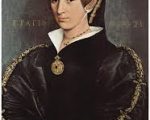
How much do you know about prominent Tudor ladies and those who served the Tudor queens?
Test your knowledge with this fun little quiz. Good luck!
[Read More...]
In this week’s Claire Chats I share details on a new book I’ve just received in the post and look at some of the Tudor-linked history books that have just been released or are due out soon. Quite a few of these are going on my Christmas list!
[Read More...]
On this day in history, 7th September 1533, the same day that Queen Elizabeth I was born, Charles Brandon, Duke of Suffolk, married Catherine Willoughby.
This was the duke’s fourth marriage. He was about forty-nine years old and Catherine was just fourteen. She was the daughter of William Willoughby, 11th Baron Willoughby de Eresby, and his wife, Lady Maria de Salinas, a woman who had come over from Spain with Catherine of Aragon in 1501 as one of her ladies. Suffolk had acquired the wardship of Catherine Willoughby in 1529 and had originally intended to marry her to his son, Henry, 1st Earl of Lincoln. However, following the death of his third wife, Mary Tudor, Queen of France, it appears that Suffolk took a liking to his ward, or rather the money and lands that he would gain by marrying her. Their marriage took place less than three months after Mary’s death.
[Read More...]
At three o’clock in the afternoon of Sunday 7th September 1533, the eve of the feast of the Nativity of the Blessed Virgin Mary, Queen Elizabeth I was born at Greenwich Palace.
Elizabeth was the daughter of King Henry VIII and his second wife, Anne Boleyn, and she came to the throne following the death of her older half-sister, Queen Mary I, on 17th November 1558. She reigned for over forty-four years, until her death on 24th March 1603, and her reign became known as a “golden age”. Elizabeth I has gone down in history as Good Queen Bess, the Virgin Queen and Gloriana.
[Read More...]
Born around 1502 in Bechworth, Surrey, Elizabeth was the daughter of Lucy Neville and Sir Anthony Browne; with the latter serving as standard-bearer to Henry VII and occupying the post of Lieutenant of Calais.
Little is known of Elizabeth’s early life, however, her family did have connections to the royal court. Her father was a trusted courtier, and in 1508 her sister Anne married Sir Charles Brandon, one of the future King Henry VIII’s closest friends.
During the 1520s Elizabeth was of marriageable age, and in around 1526 she was matched with Henry Somerset, the second Earl of Worcester. This was an elevated match as her father was neither royal nor noble, however, his descendants were members of parliament. Somerset’s first wife, Lady Margaret Courtney, granddaughter of Yorkist queen Elizabeth Woodville, had died without issue. Elizabeth and Henry married before 1527 and would go on to produce nine children, with many living into adulthood.
[Read More...]
Hello to all full society members!
Well, we’ve had an incredibly busy time packaging up all the pin badges for full members, and we’ve sent them all out now… they should be arriving in your post box any day now!
We thought we’d have a little fun, with a fantastic prize to give away too!
[Read More...]
On this day in history…
4th September:
1504 – Birth of Antoine de Noailles, soldier and French diplomat at the English court in Mary I’s reign, at Château de la Fage.
1539 – William, Duke of Cleves, signed the marriage treaty promising his sister, Anne of Cleves, in marriage to King Henry VIII. The Duke then sent the treaty to England, where it was ratified and concluded by early October.
1550 – Death of Sir Thomas Paston, Gentleman of the Privy Chamber in the reigns of Henry VIII and Edward VI.
1588 – Robert Dudley, Earl of Leicester died at his lodge at Cornbury, near Woodstock in Oxfordshire.
He had been ill for some time with a recurring stomach ailment, and so had decided to travel to Buxton to take the waters, but he died on the way.
1590 – Death of Sir James Croft, Lord Deputy of Ireland, member of Parliament and conspirator. Croft was one of the leaders of Wyatt’s Rebellion in 1554, but although he was sentenced to death for treason, he was eventually released and pardoned. He served Elizabeth I as Comptroller of the Household, but was imprisoned briefly in her reign for negotiating with the Duke of Parma without permission. Croft was buried at Westminster Abbey, in the Chapel of St John the Evangelist.

This week’s puzzle to get those little grey cells working is a wordsearch. Not only do you have to find the words (and they can be in any direction – ha ha!) but you have to solve the clues first. This wordsearch tests your knowledge of the Elizabethan Theatre. Good luck!
[Read More...]
Historian Leanda de Lisle has just sent me a link to a podcast she’s just published, the first in a new series on the Tudors and Stuarts. This one is called “Anne Boleyn: The Last Mystery”.
[Read More...]
In today’s Claire chats video talk, I delve into the “Vita Mariae Angliae Reginae”, Robert Wingfield of Brantham’s account of Mary I’s successful coup d’état in July 1553. It is a fascinating primary source as it gives us details of Mary’s side of things, what was happening in East Anglia then.
[Read More...]
Elizabeth Norton, author and historian, is this month’s guest expert. This month she talks about the role of women in the Tudor era, from the lowest of the low all the way up to the queens that we often hear about.
[Read More...]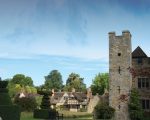
British History Tours will soon be publicising its 2018 “Anne Boleyn Experience” tour which will run from 16-20 May 2018.
The tour will be led by Philippa Lacey Brewell of British History Tours and Claire Ridgway (me!) and will be based at Hever Castle, childhood home of Queen Anne Boleyn. Participants will stay in a luxury private wing at Hever Castle and there will be tours of the castle, Hampton Court Palace and the Tower of London. We’ll actually be visiting the Tower of London on 19th May, the anniversary of Anne Boleyn’s execution.
[Read More...]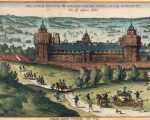
Thank you so much to Tudor Society member Nancy for asking this question: “If the queen had to make a pottie stop between residences, how would that be accomplished? Does anyone know?”
Social historian and re-enactor Bess Chilver has answered Nancy’s question, taking into account what a king would do as well. Over to Bess…
Very interesting question. Our perception of a Royal, even now in these times of minimal deference, is that of a figure, remote and almost not human. Or at least, not subject to the usual human frailties and bodily functions.
However, even a King or a Queen needs to use the (Royal) Potty sometimes, so where did they use it?
Within their own properties, there were rooms specifically for their own private use. The Close Stool or Privy was the Medieval and 16th-century versions of the modern toilet. Mostly they worked in a similar way to a modern composting toilet except that the contents of the toilet would be removed by the night soil men. The effluent would be used for composting elsewhere – an excellent example of recycling.
[Read More...]
Here is the full version of our 80-page September edition of Tudor Life Magazine. This month we focus on Katherine of Aragon, the first wife of Henry VIII.
[Read More...]
Apologies for the delay in posting this news but I was away in Moscow when it was being shared around on social media. Thank you to all those who sent me messages about it.
A new film due out in 2018 will be of interest to Tudor Society members, not only because it’s on Mary, Queen of Scots, but because it is based on John Guy’s excellent book on Mary, “My Heart Is My Own: The Life of Mary Queen of Scots”, which is a must-read. The film’s cast includes Saoirse Ronan as Mary, Queen of Scots, Margot Robbie as Queen Elizabeth I, Jack Lowden as Lord Darnley, Martin Compston as the Earl of Bothwell, Joe Alwyn as Robert Dudley, Brendan Coyle as Matthew Stewart, 4th Earl of Lennox, and David Tennant as Anthony Babington, so some big names.
[Read More...]
Kit Harington, AKA Jon Snow, is starring alongside Peter Mullan, Mark Gatiss and Liv Tyler in a new drama coming soon to BBC One.
Kit will be playing Robert Catesby, one of the plotters of the infamous Gunpowder Plot which sought to blow up the House of Lords at the opening of Parliament on the 5th November 1605, and to assassinate King James I. You can click here to read more about the plot, but here is a trailer for the drama. The BBC has not announced a date yet for the series to air.
[Read More...]
Long term Tudor Society member, Catherine Brooks, recently went to Bosworth to see the events over the Battle of Bosworth weekend. She took a little video of the battle and then spoke to Tim Nightingale, one of the reenactors of the day. We hope you enjoy this video!
[Read More...]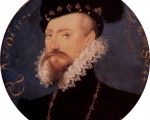
On this day in history, 28th August 1588, an ill Robert Dudley, Earl of Leicester, wrote what would be his final letter to his queen and life-long friend, Elizabeth I.
I want to take this opportunity to share the Claire Chats video talk that I did on this subject back in September 2016. I hope you enjoy the talk.
[Read More...]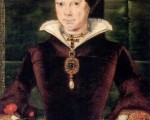
On this day in history, 28th August 1551, Lord Chancellor Richard Rich, Sir Anthony Wingfield and Sir William Petre went to Copthall in Essex to see the Lady Mary (future Mary I), half-sister of their king and master, Edward VI.
They had been sent to Copthall to deliver a message to Mary from the king. Edward VI was ordering Mary and her household to desist from celebrating the Catholic mass. Edward also ordered that Sir Anthony Wingfield should replace Robert Rochester as Mary’s comptroller.
Mary was furious with the men and refused to obey them or her brother’s orders. The men reported what happened in a letter to the king and his privy council. Here is the whole letter:
[Read More...]
On this day in history…
28th August:
1550 – Death of Thomas Magnus, administrator, Archdeacon of the East Riding of Yorkshire, member of the King’s Council and diplomat, at Sessay in the North Riding of Yorkshire. He was also buried there.
1551 – Lord Chancellor Richard Rich, Sir Anthony Wingfield and Sir William Petre went to Copthall in Essex to see Edward VI’s half-sister Mary. The purpose of their visit was to deliver the King’s order that Mary and her household should desist from celebrating the Catholic mass, and that Wingfield should replace Robert Rochester, whom Edward’s council had removed, as Mary’s comptroller. Mary refused to obey them and they were forced to leave, having failed their mission.
1553 – Death of Sir John Harington, administrator, in Bishopsgate, London. He was buried in Exton. Harington served Henry VIII as Esquire of the Body, Treasurer of War (1542 and 1543), Vice-Treasurer of the army for the 1544 French campaign and Treasurer of the expedition to France (1546).
1583 – Burial of William Latymer, Chaplain to Queen Anne Boleyn, Dean of Peterborough, chaplain to Elizabeth I and author of the “Cronickille of Anne Bulleyne”, a biography of Anne Boleyn. He was buried in Peterborough Cathedral.
1588 – Execution of William Dean, Roman Catholic priest and martyr, by hanging at Mile End Green, Middlesex. He was found guilty of high treason for being a Catholic priest.
1588 – Execution of Franciscan friar and martyr, Thomas Felton, near Brentford, Middlesex. He was hanged, drawn and quartered for his beliefs, and for proclaiming that he could not accept a woman as supreme head of the Church.
1588 – An ill Robert Dudley, Earl of Leicester, wrote his final letter to his queen and childhood friend, Elizabeth I.
1609 – Death of Sir Francis Vere (de Vere), soldier. He served in the English army in the Low Countries, and also in the 1596 Cadiz expedition. He was buried in Westminster Abbey.

Here’s the excerpt from last night’s livechat with Lauren Browne for those who couldn’t make it to the chatroom.
[Read More...]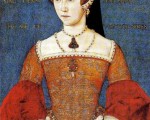
How much do you know about the ladies who served Mary throughout her life, from when she was a princess, through her being the illegitimate Lady Mary, and then on to her time as queen? Test yourself with today’s quiz. Good luck!
[Read More...]